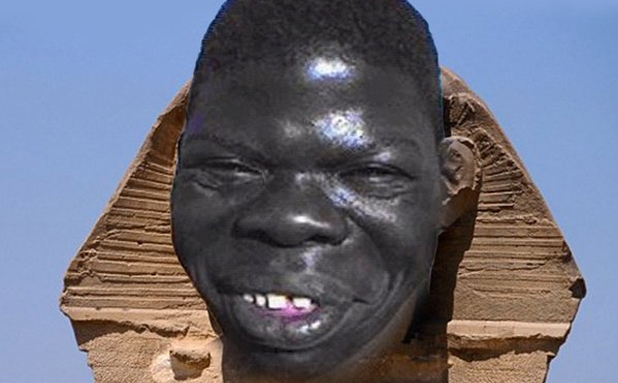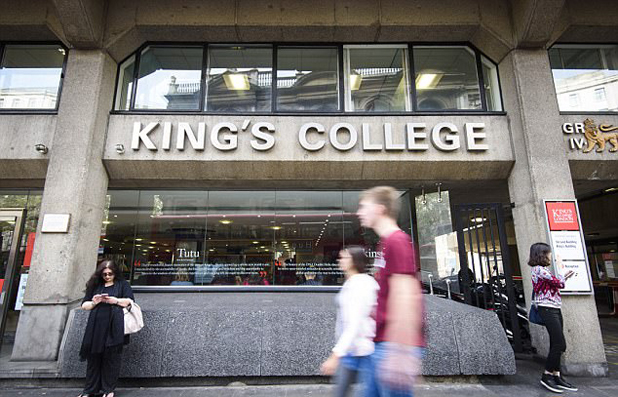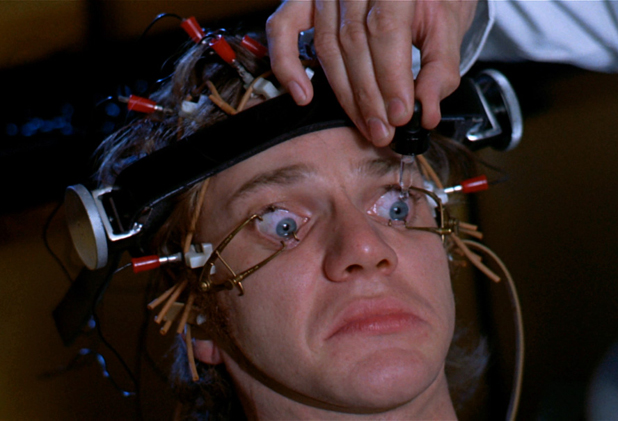Due to constant abuse at the hands of colonialists and crusaders, non-White people have a deep-rooted fear of White people that makes life in European countries difficult and unpleasant.
Going to work, visiting the dentist, ordering drinks, attending college… these everyday experiences are nerve-wracking affairs for colored immigrants because of the ongoing risk of encountering people whose descendants whipped Blacks, decapitated Moslems and gassed Jews.
This fear of White people is so deep, in fact, that even artistic representations of Whites can trigger a mild panic.
Acknowledging this dilemma, students and staff at King’s College London – one of the city’s most prestigious universities – have started to purge the institution of White faces to make it more welcoming to students of color.
King’s College London will replace busts and portraits of its founding fathers with ethnic minorities amid pressure from students, according to a dean.
The world famous institute of Psychiatry, Psychology and Neuroscience plans to move portraits of former faculty staff from the main entrance wall.
They will be replaced with likenesses of more black and minority ethnic scholars, it has been reported.
The decision follows concern among academics that the current teaching is too ‘intimidating’ for ethnic minorities.
The proposals were revealed by Professor Patrick Leman, the institute’s dean of education, who said that the faculty should not just be filled with ‘busts of 1920s bearded men’.
…
He said that the portraits lining the main entrance are ‘almost entirely white middle-aged men’ and will be replaced with a ‘wall of diversity’.
He added that all current portraits of former deans would be ‘taken down’ and rehung, and that teaching materials, such as diagrams of the human anatomy, will be changed to feature a ‘range of ethnic groups’.
Two of the founding fathers of the institute include Dr Henry Maudsley, left, and Sir Frederick Mott, right.
If you disagree with this decision, you’re probably White and cannot comprehend the level of spiritual malaise that overcomes non-Whites when they see White faces.
So, I’ll try and explain that malaise to you.
Toward the end of Stanley Kubrick’s 1971 film, A Clockwork Orange, the main character – Alex – becomes nauseated at the sight of violence after undergoing an aversion therapy program, during which he is forced to watch violent films for two weeks.
Now, let this sink in: Whites committed violence against non-Whites for two millennia, not two weeks. And unlike Alex, who watched celluloid violence from the safety of a cinema seat, the violence these non-Whites endured was real.
Can you imagine the degree of trauma encoded into their DNA?
If you can, you’ll understand why all instances of Whiteness – even oil paintings of White figures – must be removed if our colorful guests are to function in our societies.
An uncomfortable experience, yes – but nothing compared to the trauma of the Crusades.
Keith Mott, a systems engineer and direct descendant of Sir Frederick Mott, said that whilst he was not ‘offended’ by the plans, he would caution against universities seeking to erase controversial parts of their history.
“Controversial” parts of their history? Frederick Mott was more than just “controversial,” Keith, and you know it.
Mott was a brutal proto-Nazi eugenicist who actually claimed that degenerating genetics caused mental illness – a suggestion so shocking that even his fellow eugenicists believed he was of the devil!
It’s easy to understand why non-Whites would be intimidated by the cold, Darwinian gaze of a physician who openly advocated for their extermination.
Meanwhile, Sam Barrett, President of the King’s Conservative Association said it was ‘political correctness gone mad’ as he accused the university of caving to students’ demands.
Frankly, Sam Barrett should be in prison.
He knew fully well that there was a line between free speech and slavemaster speech, and he didn’t just cross that line – he forced it to pick cotton.
The decision comes two years after King’s sparked controversy for removing a photograph of Lord Carey, the former Archbishop of Canterbury, in response to his opposition to gay marriage.
It might have been a controversial decision at the time, but who remembers the photograph now?
This is why I believe that the current decision to replace the busts and paintings will be successful; even if a handful of bigots disagree with it, the decision will soon be forgotten and, in time, regarded as the norm among the increasingly non-White student body.
The darker the skin, the brighter the future.





